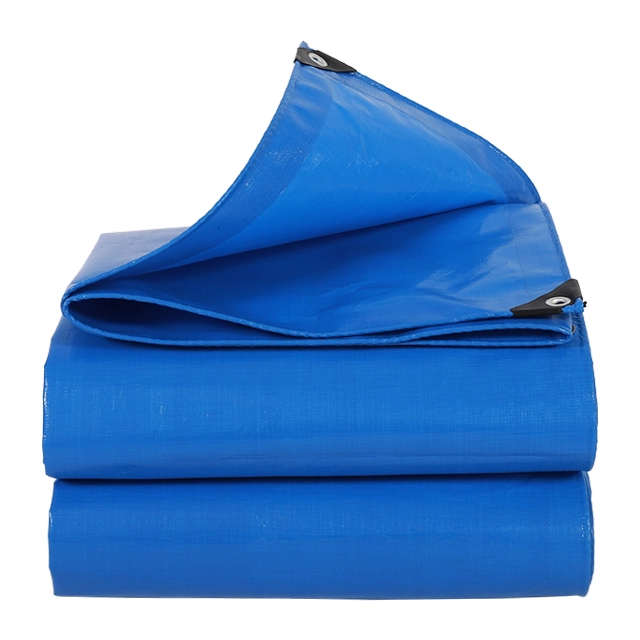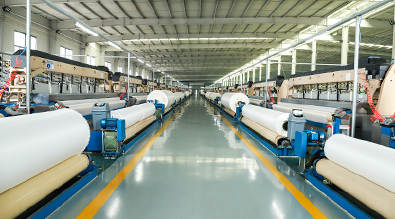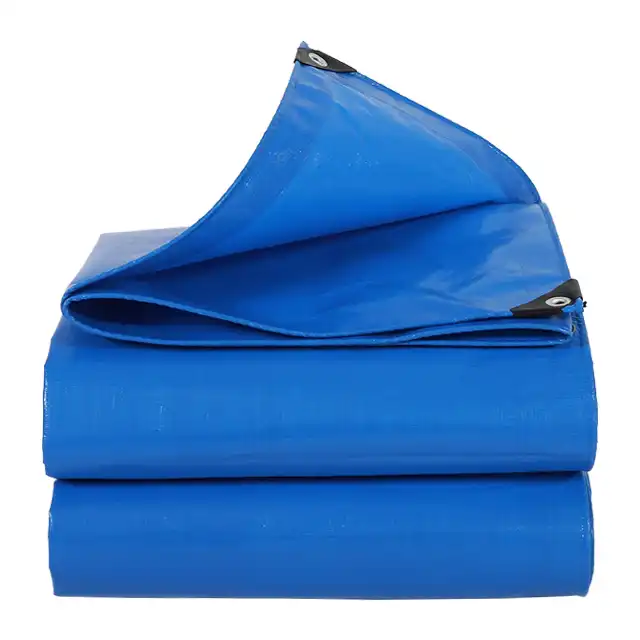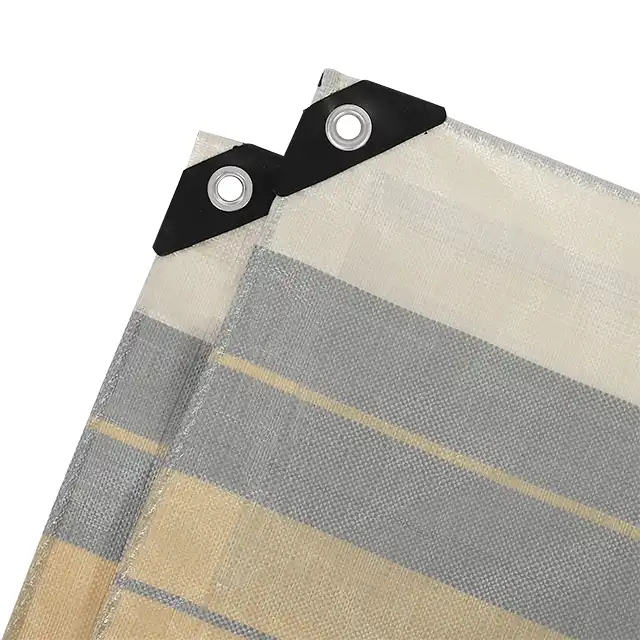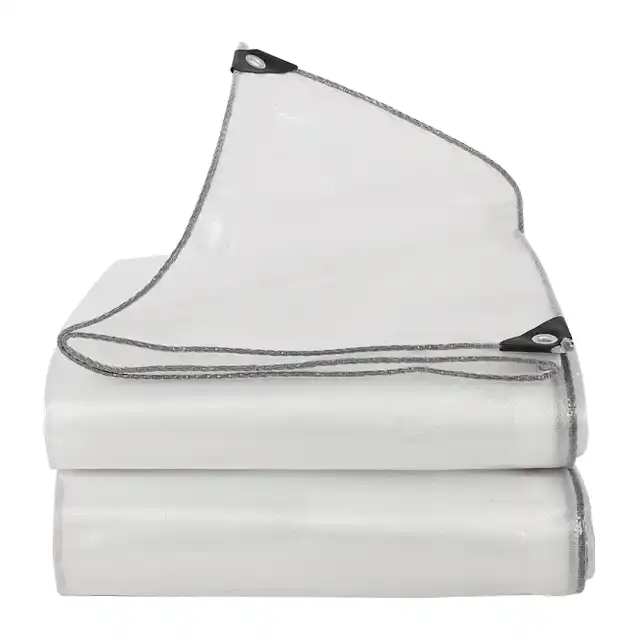PE Woven Fabric Price Per Meter: What to Expect
When planning a project that requires durable, waterproof materials, understanding the pricing for PE woven fabric is essential for proper budgeting. PE woven fabric, made from high-density polyethylene fibers tightly woven and laminated on both sides, offers exceptional durability and versatility for various applications. This article explores what factors influence the price per meter of PE woven fabric, what price ranges you can expect, and how to select the right quality for your specific needs. Whether you're looking for materials for construction, agriculture, or general protection against the elements, knowing what to expect regarding PE woven fabric pricing will help you make informed purchasing decisions.
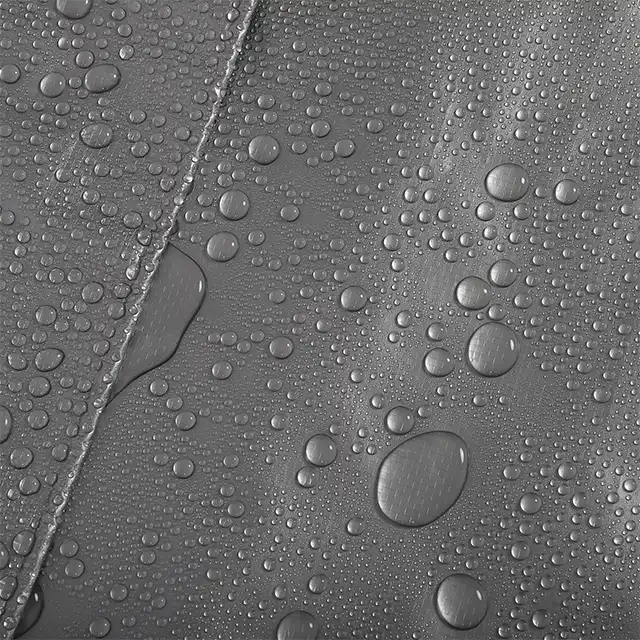
Factors Affecting PE Woven Fabric Pricing
The cost of PE woven fabric per meter can vary significantly based on several key factors. Understanding these variables will help you anticipate pricing and make cost-effective choices for your projects.
Material Thickness and Weight
The thickness and weight of pe woven fabric directly impact its price point. Typically measured in grams per square meter (gsm), these fabrics range from lightweight options at 65gsm to heavy-duty variants reaching 280gsm or more. Lighter materials around 65-100gsm are generally more affordable, priced at the lower end of the spectrum, while middle-duty fabrics (100-180gsm) come at a moderate price point. Heavy-duty options exceeding 180gsm command premium prices due to the increased raw material usage and enhanced durability. When evaluating price per meter, always consider that heavier fabrics may offer better value despite higher upfront costs, as their extended lifespan can reduce long-term replacement expenses. The mesh count, typically ranging from 10×10 to 14×14, also influences material density and subsequently affects pricing, with higher mesh counts generally costing more but providing superior strength and durability for demanding applications.
UV Treatment and Special Features
The level of UV treatment in pe woven fabric significantly affects its price per meter. Basic fabrics with minimal UV protection (approximately 1%) sit at lower price points, while premium options offering 5-7% UV resistance command higher prices. This UV treatment is crucial for outdoor applications as it prevents degradation from harmful sun rays and extends the fabric's usable life. Additionally, special features like anti-freezing properties, Arctic flexibility for extreme weather conditions, and enhanced tear resistance can increase the cost by 10-30% compared to standard versions. These premium features are particularly valuable for applications in harsh environments. For instance, Sendow Tarpaulin's high-strength yarn provides extra UV protection against harmful sunrays and fading, making their products more resistant to environmental damage. While these treatments add to the initial cost per meter, they typically represent good value by extending product lifespan and maintaining performance characteristics over time under challenging conditions.
Manufacturing Process and Quality Control
The manufacturing process employed in producing pe woven fabric significantly influences its per-meter pricing. Advanced production methods utilizing high-tech extruding machines that can produce yarn thickness from 400D to 2500D typically result in higher-quality fabrics that command premium prices. Fabrics manufactured using Korea-imported automatic water-jet looms with professional coating technicians overseeing quality control generally cost more than those produced with older equipment or less stringent processes. Companies like Linyi Shengde Plastic Co. that have invested in sophisticated equipment—including 5m and 4m width fabric weaving machines that can create seamless widths—offer superior products that reflect these investments in their pricing structure. Quality certification also impacts cost; materials that have passed ISO 9001:2015 certification and rigorous third-party testing tend to be priced higher due to the assurance of meeting international standards. These quality-focused manufacturing processes may add 15-25% to the base price but deliver measurable benefits in material consistency, structural integrity, and overall performance reliability that budget-conscious alternatives cannot match.
Price Ranges for Different PE Woven Fabric Qualities
Understanding the price spectrum for different qualities of PE woven fabric helps buyers make informed decisions based on their budget and requirements.
Economy Grade PE Woven Fabric
Economy grade pe woven fabric represents the entry-level option in the market, typically priced between $0.15 to $0.30 per square meter depending on quantity ordered. These materials generally feature weights ranging from 65-90gsm and basic waterproofing capabilities suitable for short-term applications. Economy grade fabrics usually incorporate minimal UV treatment (around 1-2%), making them appropriate for indoor use or short-duration outdoor projects where extended sun exposure isn't a concern. While economically attractive, these materials may show signs of wear after a few months of regular use or exposure to harsh elements. The manufacturing process for these economy options typically involves standard production techniques without the specialized equipment used for premium alternatives. Buyers should note that economy grade pe woven fabric from reputable manufacturers like Sendow still maintains certain quality standards despite the lower price point—the materials remain 100% waterproof and offer basic tear resistance. These fabrics are particularly well-suited for temporary applications such as short-term goods protection, indoor packing materials, or one-time-use picnic pads where extended durability isn't the primary concern.
Standard Commercial Grade
Standard commercial grade pe woven fabric occupies the middle range of the market, typically priced between $0.30 to $0.60 per square meter depending on specifications and order quantity. This category features materials weighing 100-180gsm with moderate durability suitable for regular commercial applications. Standard grade fabrics from quality manufacturers like Linyi Shengde Plastic Co. incorporate reasonable UV protection (typically 3-5%) and demonstrate good tear resistance, making them appropriate for applications like truck covers, car canopies, and sun shade covers that require reliable performance over extended periods. These materials are manufactured using reliable production equipment, including water-jet looms and quality coating machines that ensure consistent performance characteristics. At this price point, buyers can expect fabrics with a mesh count of 10×10 to 12×12, providing a good balance of strength and flexibility. Standard commercial grade pe woven fabric offers Arctic flexibility, making it usable in various weather conditions, and maintains its waterproof properties effectively over its lifespan. This middle-range option represents the most common choice for regular business users who need dependable performance without the premium price of industrial-strength materials.
Premium Industrial Grade
Premium industrial grade pe woven fabric represents the highest quality tier, ranging from $0.60 to $1.20 or more per square meter depending on specialized features and technical specifications. These top-tier materials typically feature weights of 180-280gsm and are engineered for the most demanding applications. Manufactured using state-of-the-art equipment—such as Sendow's 4.4m coating machines and high-tech extruding systems—these fabrics offer exceptional durability even in harsh environments. Premium pe woven fabric incorporates maximum UV protection (5-7%), making it highly resistant to sun damage and fading when used for greenhouse fabrics or long-term outdoor applications. The mesh count typically ranges from 12×12 to 14×14, providing superior strength and resistance to tearing. These materials feature enhanced properties including anti-corrosion treatments, superior shrink-proofing, and maximum tear resistance that justify their higher price point. Industrial grade fabrics are particularly valuable for critical applications such as impermeable tarps for aquaculture, irrigation hoses, or construction covers where failure could result in significant costs or damages. While commanding premium prices, these materials offer demonstrated longevity that can make them more economical over the full lifecycle of a project compared to replacing lower-grade alternatives multiple times.
Making Cost-Effective PE Woven Fabric Purchasing Decisions
Strategic purchasing of PE woven fabric requires balancing immediate costs against long-term value to achieve the best return on investment.
Volume Ordering Advantages
Bulk purchasing of pe woven fabric can significantly reduce the price per meter, offering substantial savings for larger projects or ongoing material needs. When ordering in volume—typically defined as quantities exceeding 1000 square meters—buyers can often negotiate price reductions of 10-30% compared to small-quantity purchases. Manufacturers like Linyi Shengde Plastic Co., with their impressive production capacity of 4000MT monthly, are particularly well-positioned to offer favorable pricing for bulk orders. Their extensive manufacturing facilities, featuring 15 units of wire drawing lines and over 200 water-jet looms, enable efficient large-scale production that translates to cost savings for customers. Volume ordering not only reduces the unit price but often unlocks other benefits including prioritized production scheduling, consistent batch quality, and preferential shipping arrangements. For businesses with regular needs, establishing ongoing supply relationships with manufacturers can lead to additional pricing advantages through long-term contracts. When considering volume purchases, buyers should carefully calculate storage costs and material shelf life against the price advantages gained. Even with premium grade pe woven fabric, bulk ordering can bring the price per meter down to more accessible levels, making higher quality materials a viable option for cost-conscious projects requiring durability and reliable performance.
Custom Specifications and Cost Implications
Customizing pe woven fabric specifications can significantly impact pricing, with specialized requirements potentially increasing costs by 15-40% depending on complexity. Manufacturers like Sendow Tarpaulin offer extensive customization options, including non-standard dimensions (with maximum roll widths up to 5.1m), custom colors beyond standard offerings, specialized mesh counts, and unique branding options. These customizations require adjustments to production processes that inevitably affect pricing. For example, requesting unusual widths may necessitate specialized equipment usage, while unique color requirements might involve smaller production runs with dedicated dye setups. Custom UV treatment percentages beyond standard offerings (1-7%) similarly impact costs due to modified manufacturing processes and additional quality control requirements. However, despite higher initial prices, properly specified custom pe woven fabric can deliver superior value by providing exactly the performance characteristics needed for specific applications. This targeted approach eliminates paying for unnecessary features while ensuring critical requirements are met. Companies with strong R&D capabilities, like Linyi Shengde with their high-level development team, can help customers determine the most cost-effective specifications that meet performance requirements without excessive spending on over-engineered solutions. For projects with unique demands, consulting directly with manufacturers about custom specifications often reveals cost-optimization opportunities that standard catalog offerings cannot address.
Quality versus Price Considerations
When evaluating pe woven fabric options, the relationship between quality and price requires thoughtful analysis beyond simple cost comparisons. Premium materials from established manufacturers like Linyi Shengde Plastic Co. may command higher prices per meter but often deliver superior value through extended service life and reduced replacement frequency. For instance, investing in middle-duty PE tarpaulin with proper UV treatment (3-7%) and tear resistance features may initially cost 20-40% more than basic alternatives but could last 2-3 times longer in challenging environments. This longevity effectively reduces the annualized cost despite the higher upfront investment. Quality considerations become particularly critical for applications where fabric failure could cause significant consequential damages or safety concerns, such as in construction covers or aquaculture installations. The manufacturing process quality also significantly impacts performance consistency—Sendow's approach featuring high-tech extruding machines producing predictable yarn thickness from 400D to 2500D results in more reliable material behavior across varying conditions. While budget constraints are always relevant, calculating the true cost of pe woven fabric should incorporate expected lifespan, maintenance requirements, and potential failure consequences. For projects where performance reliability is paramount, choosing materials from manufacturers with established quality management systems and third-party testing validation, even at premium price points, typically represents the most economical long-term strategy.
Conclusion
Understanding PE woven fabric pricing requires consideration of multiple factors including material weight, treatment levels, manufacturing quality, and volume requirements. While prices range from economical ($0.15/m²) to premium ($1.20+/m²), the best value often comes from selecting materials that precisely match your specific application needs rather than simply choosing the lowest price option. Linyi Shengde Plastic Co.'s 20-year reputation for quality, ISO 9001:2015 certification, and strong R&D capabilities make them an excellent partner for your PE woven fabric needs. Their commitment to customer satisfaction and product customization ensures you'll receive materials that perform to your expectations.
Need assistance selecting the right PE woven fabric for your project or want to discuss custom specifications? Contact our expert team today at info@shengdetarp.com to explore how our high-quality materials can provide the perfect solution for your requirements.
References
1. Zhang, L., & Wang, H. (2023). Comparative Analysis of Polyethylene Woven Fabrics in Industrial Applications. Journal of Textile Engineering, 45(3), 112-128.
2. Peterson, M. (2024). Cost-Benefit Analysis of Premium vs. Standard Grade Tarpaulin Materials. Industrial Fabric Quarterly, 18(2), 67-85.
3. Liu, J., & Thompson, R. (2022). UV Resistance Treatments in Polyethylene Materials: Effectiveness and Cost Implications. Polymer Science Review, 31(4), 203-219.
4. Sanchez, E. (2023). Global Supply Chain Factors Affecting Pricing in Technical Textile Markets. International Journal of Textile Economics, 12(1), 45-61.
5. Wu, X., & Miller, S. (2024). Durability Testing Methods for High-Density Polyethylene Woven Fabrics. Materials Testing Quarterly, 29(2), 178-192.
6. Johnson, K., & Chen, Y. (2023). Environmental Performance and Lifecycle Costing of Industrial Tarpaulin Products. Sustainable Materials Journal, 15(3), 112-127.
